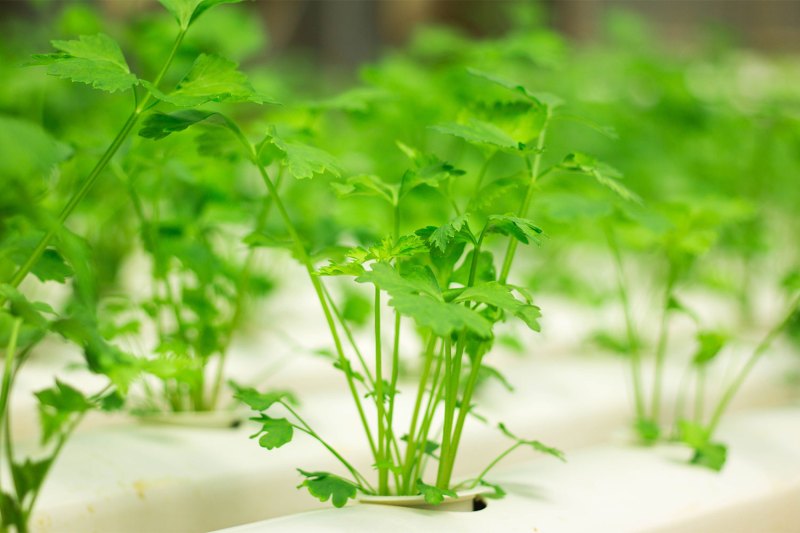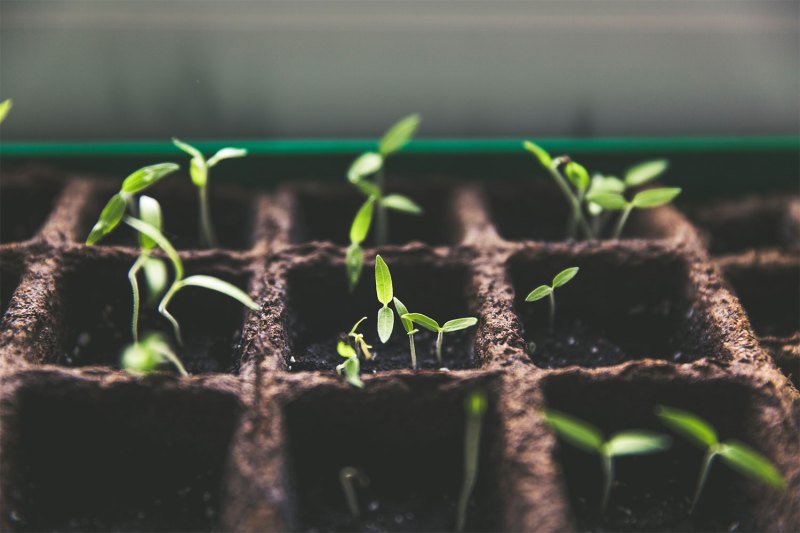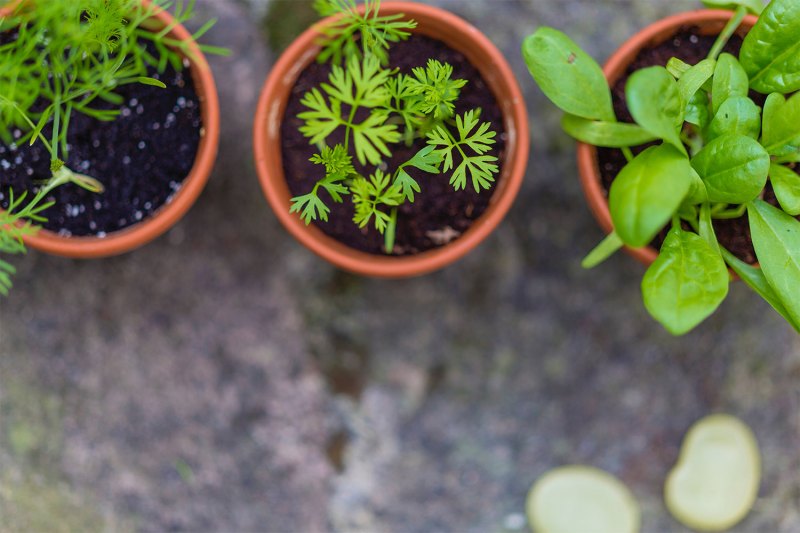Growing your own herbs indoors is easy and satisfying. You just can’t beat the pesto you make with fresh-picked basil, the mojito you mix with mint mere minutes old, or the chicken you bake sprinkled your very own homegrown rosemary. So on it goes, whether you’re growing chives, cilantro, parsley, oregano, or any of the other many herbs you can grow indoors all year long. Fresh herbs taste great, pack in plenty of nutrients, and are cheap to grow once you get over the hump of starting.
And all you need to start your own indoor herb garden is a window that gets several hours of good sunlight, a planter, some soil, some seeds, some water, and some nutrients, either in the form of a store-bought fertilizer or from compost you make yourself, being the resourceful type you are. The other option? A self-contained hydroponic garden that handles the light and watering for you (with occasional assists needed).
Growing herbs at home really is simple stuff, whether you go with a hydroponic garden or a traditional soil setup. Let’s look at a few of the pros and cons of both routes. You can also take a look at our list of easy plants to grow for more inspiration.
Hydroponic vs. Traditional
Hydroponic

The benefits of a hydroponic system include:
- No need for soil
- No need for natural sunlight
- Clean and self-contained system
- Limited need for watering
But there are a few drawbacks to note:
- Costly initial investment
- Specialized nutrient solution needed
- More difficult to grow from seed (or costly specialized pods required)
Traditional

With a more traditional approach to growing herbs — using soil and relying on sunlight — your benefits are:
- Low setup and maintenance costs without specialized equipment
- Easier growth from seed or transplanting
- Compost or fertilizers provide nutrients
And then the cons to consider:
- Less reliable herb growth
- Dependence on sunshine (or supplemental lighting)
- Regular watering required
Which Is Better?
So, which is the better approach? That’s really up to you, but there are a few factors to consider. If you have limited space in your home — especially if you have limited space near a window — a hydroponic system is probably the way to go. Likewise if you don’t have much free time or simply know you’re not going to devote much time to your indoor herb garden, let a self-contained hydroponic setup do (most of) the work for you.
On the other hand, even the cheapest hydroponic systems still cost much more than you’d need to pay for a planter and enough soil, seeds, and fertilizer to raise several rounds of herbs in a traditional setup, and that’s for the system alone. Also, once you have an herb garden successfully growing in soil, you have more control over your plants. They can be transplanted to other planters in the house or even put into soil outside once they’re hearty (and the weather permits).
Let’s talk about setting up your traditional indoor herb garden first.
Setting Up an Indoor Herb Garden Using Soil
Ideally (and this is assuming you’re in the Northern Hemisphere — flip things around if you’re with us from south of the equator) you can establish your indoor herb garden in a south-facing window to maximize sunlight. If not, east or west are the next best bets. (Signs that your herbs are not getting enough light include long sections of stem between leaves, small leaves, or yellowing, FYI.)
Whatever size or type of planter you use for your herbs, ensure the plants will get proper drainage. This means using a planter with holes in the bottom whether you drill them into that reused soup can or make sure the planter you purchased has them. Use clay (terra cotta, e.g.) planters if you live in a damp climate, but go with something made from plastic, metal, or with a glaze if you live in a drier area. Also, it’s a good idea to put a layer of large pebbles in the bottom of the planter before you add the soil, and of course, put a plate or platter or something of the sort underneath the planter.

As for the type of soil best suited for indoor herb gardens, a store-bought potting mix is going to be your best bet, but you can use soil sourced from outdoors provided it’s not too sandy, rocky, or heavy on the clay, and make sure you mix in some compost or fertilizer for best result.
Your indoor herb garden will do just fine in the standard room temperature range; assuming your home never dips into the 50s or gets over 80 degrees Fahrenheit, they should do fine.
When it comes to watering, only do it enough to keep the soil moist; herbs don’t need that much water, really. Yellowing leaves might mean too much water. A drying out plant? Yeah, too little.
The easiest way to grow herbs indoors in soil is, of course, to buy a plant that is already established and transplant it into your windowsill planter. However, growing herbs from seed isn’t hard either. The easiest way to do it is to sprinkle a few seeds (check the packaging for specifics or read up on your plant if you don’t have a seed packet with notes) into a shallow divot made with a finger, then lightly cover the seeds with more soil (we’re talking about a half-inch deep hole filled without compression) and moisten the soil lightly. Keep the soil damp but never soaked, and consider putting plastic wrap with a few holes over the top of the planter. When sprouts emerge, remove the plastic.
You can also grow multiple herbs from seed by using a cardboard egg carton to keep various plants separated. You can transfer the sprouted seedlings using a spoon.
Growing Herbs Indoors with a Hydroponic System
Whether you use an AeroGarden (or another hydroponic system that relies on proprietary pods pre-loaded with seeds) or you start your hydroponic herbs from seed using a specialized sponge, the process of planting herbs for an indoor hydroponic garden is so easy it really can’t be explained in steps. For the pods, put them where they fit into the planter system. For seeds grown in sponges, put the seeds in the little divots and keep them moist and under lights.
These gardens work using timers and internal watering systems, so provided you keep them filled with water and add nutrients as needed (most plug-in hydro systems have indicators to tell you exactly when this should be), there is really no work to establishing and maintaining this setup. Just make sure to keep plants trimmed before they go to seed, and be ready for limited success at best if you try to transplant your herbs to soil.



